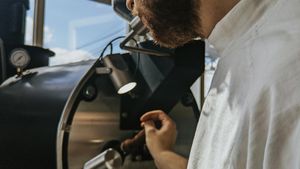Researchers are gaining insights on how aging impacts facial aesthetics, particularly focusing on the orbicularis oculi muscle situated inside the upper eyelid. This muscle plays a significant role not just in eye function but also influences the visual perception of one’s age.
A recent study published on May 15, 2025, examines the aging process associated with sunken upper eyelids, using magnetic resonance imaging (MRI), photographic evaluation, and histological analysis. The authors from POLA Chemical Industries analyzed data from Japanese female subjects, observing key physiological alterations over time.
The results suggest the development of sunken upper eyelids directly correlates with the thinning of the superior palpebral part of the orbicularis oculi muscle and underline the need for greater awareness of the underlying mechanics driving these changes. MRI scans revealed significant negative correlations between the thickness of the orbicularis oculi muscle and the degree of sunken eyelids, affirming the assumption of facial muscle involvement during aging.
Lead researcher T. Gomi stated, "Age-dependent changes highlighted several previously undescribed changes in eyelid aging, including the thinning of the superior palpebral part of the orbicularis oculi muscle." This finding supports hypotheses around the perception of age being influenced heavily by the eyes and surrounding structures, encouraging discussions around aesthetic visibility versus physiological integrity.
While the existing surgical remedies can ameliorate the appearance of sunken eyelids, they often do not address the foundational cause — muscular thinning and associated tissue changes. The current study fills this knowledge gap, indicating the importance of considering muscular health when addressing aesthetic concerns related to aging.
Histological evaluations also revealed alterations to muscle fiber composition, pointing out decreases of MYH4-positive muscle fibers, which are linked to fast-twitch capacities. This change may compound aging-related effects on eyelid morphology, influencing how individuals perceive themselves and are perceived by others.
The study's findings have broad implications for future research and clinical approaches to facial aging. Determining progressive changes through advanced imaging and histological mapping could open avenues for preventative healthcare strategies aimed at muscle preservation, potentially enabling individuals to retain more youthful appearances for longer.
To conclude, this research offers pivotal insights indicating the thinning of fast-twitch muscle fibers within the orbicularis oculi muscle could be integral to the aesthetic development of sunken upper eyelids. The studies discussed may inspire new preventative solutions as we continue to explore the aging phenomena affecting our facial structures.



